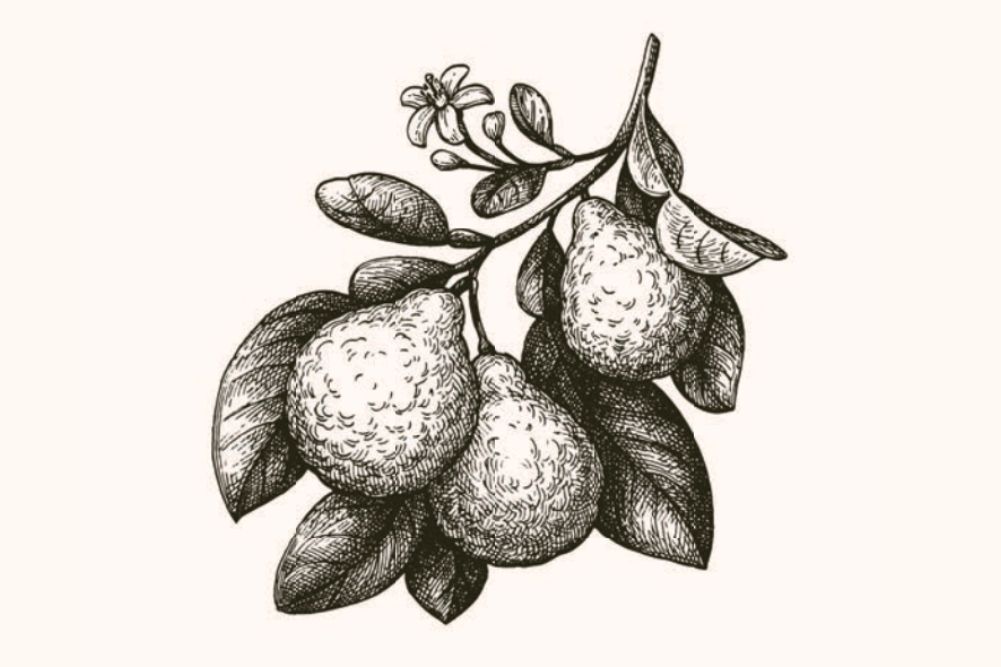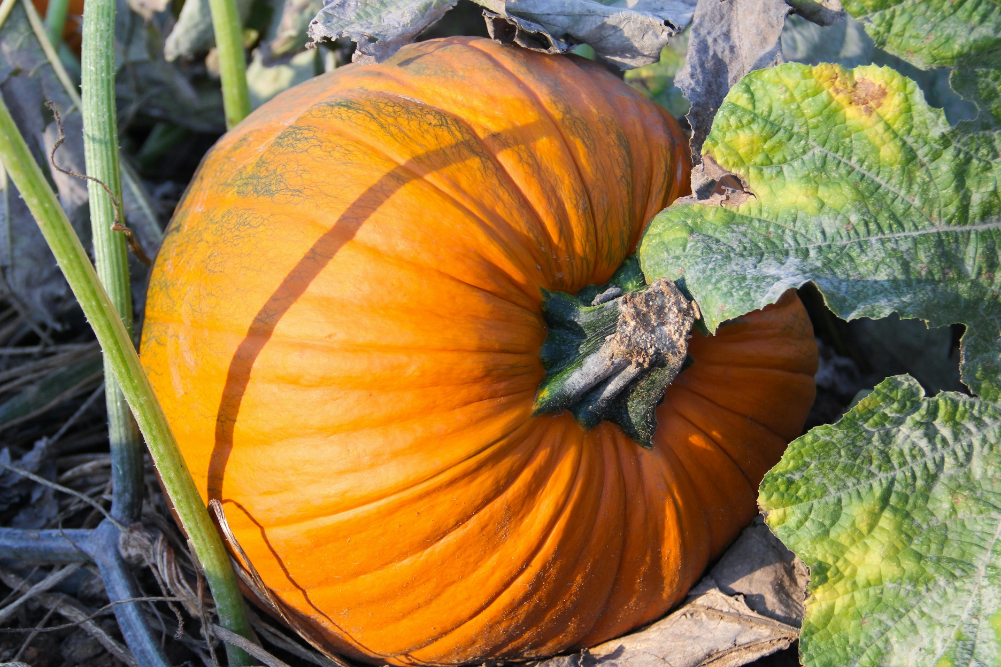Want to grow your own food? Read these top tips
Fresh, healthy food is necessary for a thriving, active lifestyle. Fresh fruit and vegetables are a central part of nourishing daily eating habits and more people are realising the importance of including organic foods in their diets to benefit their wellbeing and also the planet.
The availability of organic and locally grown food is on the rise, too, thanks to many farmers’ markets and local food co-ops. These are great if you can access them regularly but, if you don’t have a market or co-op nearby, or can’t afford fresh food each day, you could be left wondering how to keep your healthy eating habits going.
Enjoying foods that are grown, harvested and eaten in harmony with the environment leaves you feeling balanced, vibrant and full of stamina.
You could go to the supermarket — purchasing fresh produce would seem to be easy these days as there are plenty of supermarkets advertising fresh food to us. But “fresh” food sometimes isn’t really all that fresh, and by fresh I mean grown locally and seasonally.
Fresh fruit, herbs and vegetables are best eaten when in season to avoid extended storage and diminishment of nutrients. The best way to gain valuable nutrients and maximum vitality is to eat plant foods that have been recently harvested and preferably organically grown in your own garden.
Homegrown organic food provides you with the highest degree of nutrients. The reason for this is that homegrown produce, or food grown at a community garden or local organic farm, grows in healthy soil filled with life and vitality.
Organic gardeners like me just love healthy soil! It’s the life that our food is grown in and is an important part of a thriving, sustainable garden. Healthy soil helps plants to build resistance to pests and disease and gives plants the nutrients they need to grow strong.
So, if you’d like to maximise the vitality you’re getting from your food, consider growing a few plants to harvest yourself and enjoy taking an active role in building your health and wellbeing.
Edible energy
Your daily vitality, or energy level, is directly related to the energy or vitality you extract from your food. The body converts food vitality into body vitality, or chi or prana. This is most efficiently done when foods are at their energetic peak, which is when they’re grown in your own garden or organically grown and seasonally eaten.
Artificial treatments to either ripen foods or prevent them from ripening are detrimental to their vitality, as are synthetic chemicals used in the soil and sprayed on our food. Local, organic and seasonally grown food, on the other hand, is full of energy that efficiently converts into vital energy in the body.
Enjoying foods that are grown, harvested and eaten in harmony with the environment leaves you feeling balanced, vibrant and full of stamina. Here are a few of my favourites, which you can experiment with in your own vegie patch or pot-plant garden.
Parsley
This has to be my number-one favourite and most-used herb. Parsley is perfect for first-time or time-poor gardeners. Simply grow it in a container near your kitchen door or window or scatter a few parsley plants throughout your garden to pick as needed.
Parsley is a source of remarkable nutrition. It contains several times the vitamin C of citrus and is one of the higher sources of pro-vitamin A, chlorophyll, calcium, sodium, magnesium and iron.
Parsley has a long list of medicinal uses but is mainly known for its high vitamin C content as well as its ability to aid digestion. I guess that’s why it’s widely used as a garnish — to help digest our meals.
This nutrient-abundant little plant is also so easy to grow. Being a biennial, meaning it has a two-year growth cycle, parsley grows well for the first two years and will then flower and produce seeds. These seeds, if left to disperse, will spread throughout your garden and sprout when enough water, sunshine and warmth appear.
I leave baby parsley plants growing everywhere, as I love to pick the leaves and eat them straight from the Garden.
Parsley is easy to harvest but it’s best to pick the outside leaves, allowing the smaller centre leaves to grow. The more leaves you pick, the more new leaves grow.
Celery
Both the stems and leaves of celery can be used raw or in cooking. Celery improves digestion, is high in silicon and vitamin K and is antioxidant and anti-inflammatory.
Celery, like many other leafy greens, is highly sprayed during the conventional growing process. Plants grown in this way contain harsh chemicals that can adversely affect your health and wellbeing. The best way to avoid this is by growing your own organic celery to cut and use regularly.
For crunchy, sweet stems, harvest when your celery stalks are still narrow, about 1–2cm thick, and apply organic fertiliser to the soil and regularly water. This provides moisture to keep the stems juicy.
Celery stems are great in kids’ lunchboxes with a small tub of hummus. You can use the stems and leaves in green smoothies or run them through the juicer.
Celery plants are also easy to grow and, once established, will grow for months, producing crunchy stems and leaves to eat. In warm climates, plant celery seedlings in part-shade positions to reduce moisture evaporation.
I leave baby parsley plants growing everywhere, as I love to pick the leaves and eat it straight from the garden.
Grow celery from seeds using plastic punnets or purchase seedlings from a quality grower. When planting your seedlings in the garden, group small plants together to assist with moisture retention, apply a slow-release organic fertiliser and mulch with a fine organic mulch.
Cucumber
These crunchy little treats are great to grow in your garden up a wire trellis or on a tepee. Cucumbers attract bees to the garden, especially when grown with nasturtiums, fennel or dill, all of which are good companion plants for these cucurbits.
Cucumbers are a handy little plant to have growing in your vegie patch. Picked as small fruit, they are great in lunchboxes, or you can allow them to grow a little longer and add to your morning juice for extra nutrients.
The skin of cucumbers contains vital nutrients so avoid synthetic chemicals when growing them or, when purchasing them, buy only organically grown or spray-free produce where possible.
Pick regularly to encourage more flowers … and more fruit.
Cucumbers are cooling on the skin (yes, a fabulous skincare product) and also help to relieve burns, especially sunburn.
Tomato
If you’ve ever eaten homegrown tomatoes, you’ll know what an amazing flavour they have and it’s difficult to enjoy supermarket tomatoes again.
These sweet little mouthfuls have amazing antioxidant benefits. They’re high in vitamin C, biotin, vitamin K, potassium, copper, manganese and fibre, plus many other vitamins and minerals. Tomatoes have a low GI (glycaemic index) and low calorie count.
Tomatoes help to clean the liver, purify the blood and detoxify the body in general. They also help to encourage good digestion.
Vine-ripened tomatoes have a delicious, sunny flavour. Grown in a sunny, warm position, tomatoes can partly ripen on the vine and be picked and fully ripened indoors in a warm location.
You can grow tomatoes in the warmer months, sowing them in spring then growing through spring and into the summer months. In cooler climates, plant tomato seeds in plastic seed trays and store under cover until the outside and soil temperatures increase.
For strong, healthy crops and delicious fruit, grow your plants in a rich soil with added compost, rotted manure and a sprinkle of blood and bone.
Good companion plants to grow with tomatoes are celery, chives, parsley, basil and marigold. Apply mulch around your plants to contain nutrients and moisture in the soil and also to help suppress weeds. When growing tomatoes, it’s best to water from below and avoid watering the foliage as this can cause fungal diseases including black spot.
Tomatoes grow either as a bush variety, which can be grown in small garden spaces, or as taller-growing or climbing tomatoes, which need a strong trellis, cage or other support for good growth.
Citrus fruit
I’m sure most people love to use lemons and limes regularly. Packed with many vitamins, especially vitamin C, fresh citrus juice is great to have on hand for adding to warm water in the morning, squeezing over salad and adding to curries or Asian cooking and to beverages for extra flavour.
The skin on many citrus fruit can be used for cooking cakes, muffins or slices. When using the zest of a citrus, however, keep in mind that the regular growing and packing process for most fruits includes spraying with chemicals and waxes. If using purchased fruit, always wash well or soak in a diluted mix of water and apple cider vinegar. Of course, homegrown or spray-free is best when using the skins of fruits and vegetables, so I suggest growing the citrus plants you use the most.
Cucumbers attract bees to the garden, especially when grown with nasturtiums, fennel or dill, all of which are good companion plants for these cucurbits.
I love fresh lime juice, especially added to natural mineral water in summer. This is my summer staple beverage, especially delicious with freshly picked mint leaves.
Lemons and limes have antiseptic properties and also boost the immune system due to their high levels of vitamin C. This is great for our bodies as most citrus fruits ripen in winter — just when we need to boost our health through the cold and flu seasons. I love how nature supports us.
Citrus fruits are grown in most parts of the world and many varieties are available. I grow tangelos, lemons, limes, oranges and mandarins. My boys love picking fresh fruit to eat while outside playing, then they throw the skins around the trees.
Bananas
Bananas are one of the easiest plants to grow and are best suited to a subtropical to tropical climate. They’re not trees or palms; rather, they’re perennial (many life cycles), herbaceous (soft, moist flesh) flowering plants that grow from a rhizome or corm in the ground. The corm produces a stem, which then produces flowers and fruit.
Bananas are packed with nutrients and are a great snack for kids or after sports. Bananas contain high levels of vitamin B6, magnesium and potassium and they help to detoxify the body. They have a low GI, which means they provide sustained energy.
If you live in a warm climate, bananas are a fabulous plant to grow. When planted instead of palm trees, they add shade, green glossy leaves and a nice tropical feel to the garden.
Dwarf bananas are available, which are easier to grow and harvest, especially if you live in a suburban area. The plants grow well in a mound of compost with added manure and organic fertilisers.
Banana plants are also heavily sprayed in commercial production and fed with chemical-based fertilisers. So grow your own or, when purchasing bananas, find a farmer who uses spray-free and organic growing methods.
Strawberries, blueberries & raspberries
Among their many other benefits, berries such as strawberries, blueberries and raspberries are high in antioxidants, vitamin C, silicon, vitamin K, manganese and fibre and are anti-inflammatory and anti-cancer.
You can grow berries in containers or in the ground; however, I suggest using a trellis or wire support for your raspberries and planting strawberries in tubs or raised garden beds. Blueberries do well in large tubs. Most berries prefer their own space and it’s important to apply organic fertiliser to the soil and then mulch.
Berries are a delicious crop for your children, or grandchildren, to grow. Finding them is like a treasure hunt.
Some gardening tips
For strong plant growth, prepare your soil before planting by adding compost, rotted manure and organic fertiliser. Include a monthly application of organic liquid fertiliser for all leafy greens. These organic products are available at your local hardware or produce store.
Get growing
Once your vitality-giving crops are established in your garden, try to eat them daily. Add homegrown vegies or fruit to your morning green or fruit smoothies, pick some leaves for a healthy salad lunch, then stirfry or steam vegetables or add to soups for a hearty dinner.
You’ll find it’s easy to add a few freshly picked, nutrient-packed vegetables, herbs or fruits to your family’s everyday meals when you have them to hand. As well as adding vitality, you’ll also be adding delicious flavours for the whole family to enjoy. Bon appétit!








